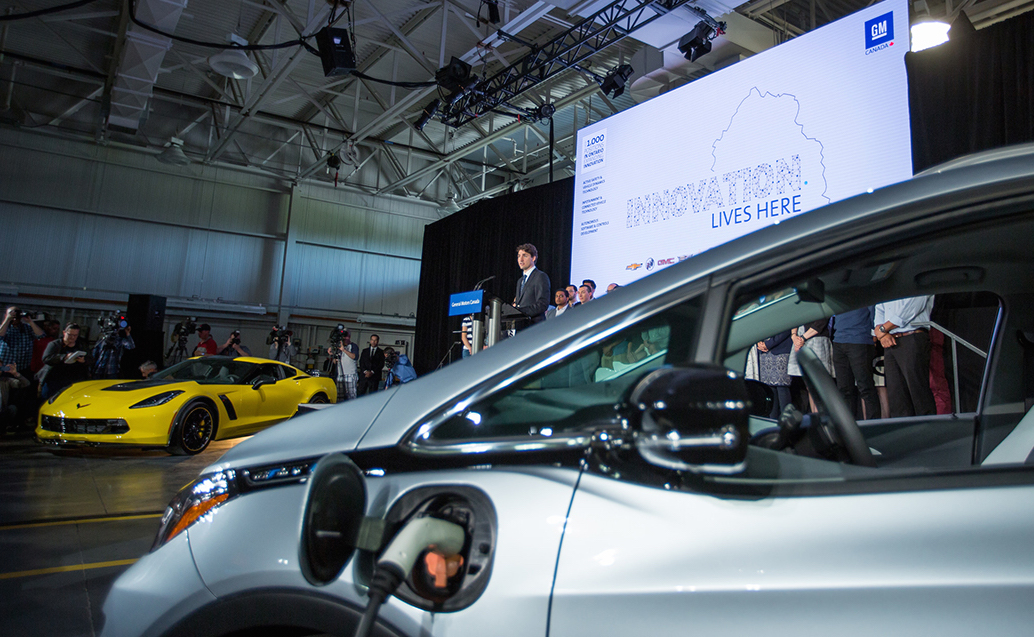After Pearl Harbour, top officials in the U.S. auto industry offered to add armaments to their auto production. President Franklin D. Roosevelt responded, in effect: nice, but not nearly enough.
He then issued sweeping orders converting the auto industry to full-time war production, banning the manufacture of private cars, halting highway construction and outlawing pleasure driving.
The Canadian government also mobilized a massive industrial effort during the Second World War, creating 28 Crown corporations to churn out war material and converting auto factories to produce military vehicles.
With climate change as potentially threatening today as the German army was back then, it’s striking that our political leaders seem unable to mount the sort of far-reaching campaigns that characterized the war effort.
Hell, our political leaders don’t seem capable of mustering the most minimal effort — even when an opportunity unfolds, amid cries of anguish, right in front of them.
I’m referring to the anguish of thousands of auto workers scheduled to lose their jobs in a few months when GM Canada proceeds to shut down its Oshawa auto production — after 100 years of operation — while increasing production in Mexico.
A group of local workers and activists, calling themselves Green Jobs Oshawa, has come up with a comprehensive and compelling plan. They’re imploring the federal government to stop standing idly by as the historic plant is mothballed, and instead to nationalize it and turn it into a publicly owned green production facility.
The ambitious project could be the first step toward converting the Canadian economy as part of a massive “Green New Deal” — which a recent Abacus poll shows 61 per cent of Canadians support and only 17 per cent oppose.
A feasibility study commissioned by Green Jobs Oshawa makes a strong case that the plant could be reformatted to produce electric-powered public utility vehicles — such as vans for the post office and hydro, ambulances and school buses.
The study estimates the government would have to invest $1.4 to $1.9 billion in the project — chump change compared to the $4.5 billion it’s invested in the climate-destroying Trans Mountain pipeline.
Furthermore, there’s a compelling case for Ottawa expropriating the plant without compensation — on the grounds that the Canadian and Ontario governments bailed out GM for almost $11 billion after the 2008 financial crash, and about $3 billion of that was never repaid.
Consider the plant owed to the people of Canada.
But, with or without compensation, none of this apparently interests our political leaders, who seem determined to restrict debate during the election campaign to issues related to politicians wearing blackface.
The government’s refusal to even explore the possibility of nationalizing the GM plant amounts to a truly missed opportunity — to save thousands of skilled jobs, to tackle climate change, and also to advance Canadian technological innovation.
The global market for electric vehicles is expanding at an explosive pace. As the Star’s Jennifer Wells noted last week, the global conversion to electric vehicles — already well underway in China and Germany — has led to opportunities for innovative companies designing zero-emission vehicles.
A Canadian green production facility, including a research unit staffed by hundreds of engineers, could open up opportunities for inventive Canadian companies — like Unicell, a medium-sized Toronto-based firm that produces fiberglass van bodies.
In an interview, Unicell president Roger Martin said his company developed a prototype of an electric delivery truck, which Purolator successfully used in an eight-week trial and was prepared to order on a large scale. But Martin said Unicell was too small to handle the order.
He could, however, envision some sort of partnership or sub-contracting arrangement with a publicly owned production facility, such as the Oshawa plant. But vision is sorely lacking in Ottawa. Certainly there seems to be none of the chutzpah with which wartime governments, almost overnight, redesigned the economy for the Second World War.
As Doris Kearns Goodwin notes in her book No Ordinary Time, U.S. firms were miraculously converted: a merry-go-round factory started churning out gun mounts, a sparkplug plant produced machine guns, a corset maker was converted to manufacture grenade belts.
If only the Trudeau government was motivated — not just to talk about climate leadership, but to show some.
Linda McQuaig is a journalist and author. Her book Shooting the Hippo: Death by Deficit and Other Canadian Myths was among the books selected by the Literary Review of Canada as the “25 most influential Canadian books of the past 25 years.” This column originally appeared in the Toronto Star.
Image: Adam Scotti/PMO



